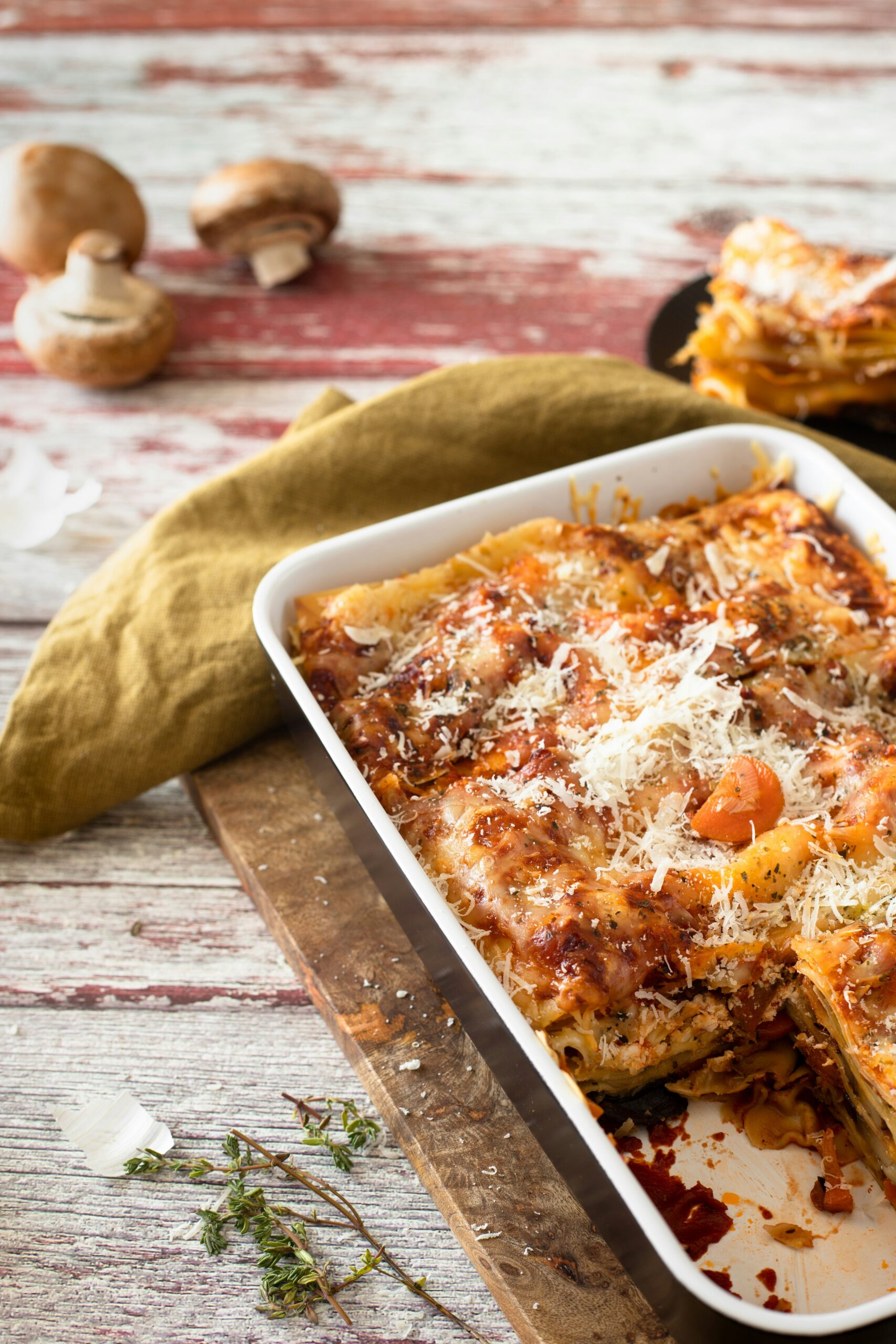Table of Contents
Introduction to Fattouche
What is Fattouche Salad?
Fattouche is a vibrant Lebanese bread salad that showcases the best of Mediterranean cuisine. This refreshing dish combines toasted or fried pieces of pita bread with a colorful medley of fresh vegetables, aromatic herbs, and a tangy sumac-infused dressing. At its heart, Fattouche represents the ingenious Middle Eastern tradition of transforming day-old bread into a delicious culinary creation.
Origins of Fattouche in Middle Eastern Cuisine
Dating back generations in the Levant region, Fattouche emerged from the practical wisdom of Lebanese and Syrian home cooks who sought to eliminate food waste. The name “Fattouche” derives from the Arabic word “fatt,” meaning to crumble or crush, referring to the broken pieces of pita bread that give this salad its distinctive texture and character.
Why Fattouche is Popular Worldwide
Fattouche has gained international acclaim for several compelling reasons. Its perfect balance of textures – from crispy pita chips to crunchy vegetables and tender herbs – creates an exciting eating experience. The bright, citrusy dressing enhanced with sumac offers a unique flavor profile that sets it apart from other salads. Additionally, its healthy Mediterranean ingredients and adaptable nature make it appealing to health-conscious diners and those seeking authentic Middle Eastern flavors.
Essential Ingredients for Fattouche Salad

Fattouche Ingrédients
A perfect Fattouche salad begins with the highest quality ingredients, each contributing to its signature taste and texture. The foundation includes fresh vegetables, crispy pita bread, and aromatic herbs, all brought together with a zesty dressing. The key is to balance these ingredients to achieve the authentic taste of traditional Levantine cuisine.
Key Ingredients in a Traditional Salade Fattouche
At the heart of every traditional Fattouche, you’ll find these essential components:
- Fresh, crisp romaine lettuce and tender purslane
- Ripe tomatoes and crisp cucumbers
- Crunchy radishes and sweet bell peppers
- Fresh mint and parsley
- Summaq (ground sumac) for its distinctive tangy flavor
- Toasted or fried pita bread pieces
- High-quality olive oil and fresh lemon juice for the dressing
- Green onions and garlic for aromatic depth
Role of Herbs, Vegetables, and Bread in Fattouche
Each component in Fattouche plays a crucial role in creating its beloved texture and flavor profile. The toasted pita bread acts as a rustic crouton, soaking up the flavorful dressing while maintaining some crunchiness. Fresh herbs like mint and parsley don’t just garnish but are treated as salad greens, adding bright flavors and essential nutrients. The vegetables provide a rainbow of textures and ensure each bite is refreshing and satisfying.
Adding a Twist: Salade Fattouche Grenade (with Pomegranate)
A modern variation includes the addition of pomegranate seeds (grenade in French), which brings an exciting dimension to the traditional recipe. These ruby-red seeds add:
- A burst of sweet-tart flavor that complements the lemony dressing
- Beautiful color contrast to the green herbs and vegetables
- Extra crunch and texture
- A boost of antioxidants and nutritional benefits
How to Make Fattouche: Step-by-Step Recipe
Fattouche Recitte: Traditional Preparation
The secret to an exceptional Fattouche lies in the preparation technique and the order of assembly. Each step contributes to creating the perfect balance of textures and flavors that make this salad unforgettable.
Preparing the Vegetables
Start by washing and cutting your vegetables with precision:
- Chop romaine lettuce into bite-sized pieces
- Dice tomatoes into medium chunks, collecting any juice
- Cut cucumbers into half-moons
- Slice radishes thinly
- Finely chop fresh herbs just before assembling
- Cut bell peppers into small squares
- Thinly slice green onions at an angle
Toasting or Frying the Bread
The pita bread preparation is crucial for achieving the perfect crunch:
- Cut pita bread into small triangles or squares
- Either toast in a 350°F (175°C) oven until golden brown, or
- Fry in olive oil until crispy and lightly golden
- Allow to cool completely before adding to the salad
Assembling the Salad
The assembly order matters for the best texture:
- Combine all vegetables except tomatoes in a large bowl
- Add herbs and toss gently
- Add tomatoes and their juice
- Add the bread pieces just before serving to maintain crispness
Vinaigrette Fattouche: The Perfect Dressing

Essential Ingredients (Lemon Juice, Olive Oil, Sumac)
The dressing brings all elements together with these key components:
- Fresh-squeezed lemon juice (never bottled)
- Extra virgin olive oil
- Ground sumac
- Minced garlic
- Salt and freshly ground black pepper
- Optional: pomegranate molasses for extra tanginess
Mixing and Adjusting the Flavor
Creating the perfect vinaigrette requires attention to detail:
- Whisk lemon juice with minced garlic and sumac
- Gradually stream in olive oil while whisking constantly
- Season with salt and pepper
- Taste and adjust – the dressing should be notably tangy
- Pour over salad just before serving, toss gently
- Sprinkle additional sumac on top for final presentation
Variations of Fattouche Salad
Salade Fattouche Traditionnelle vs. Salade Fattouche Syrienne

Traditional Lebanese Fattouche and Syrian Fattouche share many similarities but have distinct characteristics that set them apart:
Traditional Lebanese version features:
- A more abundant use of sumac in the dressing
- Larger pieces of toasted pita bread
- Emphasis on purslane as a key green
- Liberal use of fresh mint
Syrian variation includes:
- More abundant use of pomegranate molasses in the dressing
- Finely broken pita pieces
- Addition of chopped parsley and additional herbs
- Sometimes includes dried mint alongside fresh herbs
Modern Twists on the Classic Recipe
How to Incorporate Seasonal Fruits Like Pomegranate?
Modern interpretations embrace seasonal additions while maintaining the salad’s essence:
- Scatter fresh pomegranate seeds for color and crunch
- Add diced apple in autumn for sweetness
- Incorporate fresh figs when in season
- Mix in citrus segments in winter months
Adding Protein to Fattouche for a Complete Meal
Transform your Fatouche into a hearty main dish with these protein additions:
- Grilled chicken seasoned with za’atar
- Pan-seared halloumi cheese
- Crispy chickpeas tossed with Middle Eastern spices
- Grilled shrimp marinated in lemon and garlic
Vegan and Gluten-Free Adjustments
Adapt Fattouche to accommodate dietary restrictions while preserving its authentic flavors:
Gluten-Free Options:
- Replace pita with gluten-free flatbread
- Use cornbread croutons seasoned with Middle Eastern spices
- Add toasted nuts for crunch instead of bread
- Consider rice crackers as a bread alternative
Vegan Modifications:
- Skip traditional cheese toppings
- Add extra nuts and seeds for protein
- Include roasted chickpeas for heartiness
- Use maple syrup instead of honey in dressing variations
Tips and Tricks for the Best Fattouche
How to Keep Your Salad Fresh and Crunchy
The secret to a perfect Fatouche lies in maintaining its signature crunch and freshness. Here’s how to achieve the best results:
- Store vegetables and bread separately until serving time
- Pat all vegetables completely dry after washing to prevent sogginess
- Cut vegetables just before serving to maintain maximum crispness
- Keep prepared ingredients in the refrigerator, but never store assembled salad
- Add dressing and bread pieces only at the last minute
- Consider serving extra toasted pita on the side for guests to add as needed
Perfecting the Bread Texture: Toasted vs. Fried
The bread in Fatouche can make or break the dish. Each preparation method offers distinct advantages:
Toasting Method:
- Creates a lighter, cleaner taste
- Offers more consistent results
- Requires less oil
- Better for making ahead
- Ideal for everyday preparations
Frying Method:
- Produces richer, more indulgent flavor
- Creates extra-crunchy texture
- Develops deeper golden color
- Traditional preparation method
- Perfect for special occasions
Balancing Flavors in the Vinaigrette
Creating the perfect Fatouche dressing requires attention to detail and proper balance:
- Start with a 3:1 ratio of olive oil to lemon juice, then adjust to taste
- Add sumac gradually – it should be prominent but not overwhelming
- Let the dressing sit for 5-10 minutes before final seasoning to allow flavors to meld
- Taste with a piece of lettuce, not alone, as vegetables will affect the final flavor
- Remember that cold ingredients dull flavors, so make the dressing slightly stronger than you think necessary
Serving and Pairing Fattouche Salad

Dishes That Pair Well with Fatouche
Fattouche’s vibrant flavors make it an excellent companion to many Middle Eastern dishes. Here’s how to create perfect pairings:
Traditional Pairings:
- Grilled meats like shish tawook or kafta
- Fresh seafood dishes, especially grilled fish
- Hummus and baba ganoush with warm pita
- Crispy falafel
- Lebanese rice dishes
- Grilled halloumi cheese plates
- Stuffed grape leaves (warak enab)
The salad’s bright, acidic profile helps cut through rich dishes and provides a refreshing contrast to grilled foods.
How to Serve Fattuch for Special Occasions
Transform your Fattuche into a showstopping dish perfect for entertaining:
Presentation Tips:
- Serve on a large, shallow platter rather than a deep bowl
- Create layers of ingredients for visual impact
- Arrange components in sections before tossing
- Garnish with extra pomegranate seeds and sumac for color
- Add whole herbs as decorative elements
- Provide extra crispy pita on the side
- Consider individual portions for formal dinners
Special Occasion Serving Suggestions:
- Set up a Fattuche bar where guests can add their preferred toppings
- Prepare mini individual portions in appetizer cups for cocktail parties
- Create a dramatic tableside tossing presentation
- Offer different bread options (traditional and gluten-free) on the side
- Include a variety of additional toppings for guests to customize their portions
FAQs About Fatouche
What’s the Difference Between Fatouche, Fattuch, and Fattoush?
They are different spellings of the same dish.
Can You Make Fattouche Without Pita Bread?
Yes, you can substitute it with croutons or skip it for a gluten-free version.
How Long Can You Store Fattouche Salad?
Store it for up to 2 days if you keep the bread separate.
Conclusion
Fattouche is a vibrant and flavorful salad that perfectly balances fresh ingredients, tangy vinaigrette, and the satisfying crunch of toasted pita. It’s a must-try dish for anyone who loves exploring authentic Middle Eastern flavors. For more delicious recipes like this and creative culinary ideas, visit Eazeeeats—your go-to website for simple, tasty, and inspiring recipes. From traditional dishes to modern twists, we’re here to make your cooking journey easier and more exciting. Follow Eazeeeats for a world of flavors at your fingertips!



